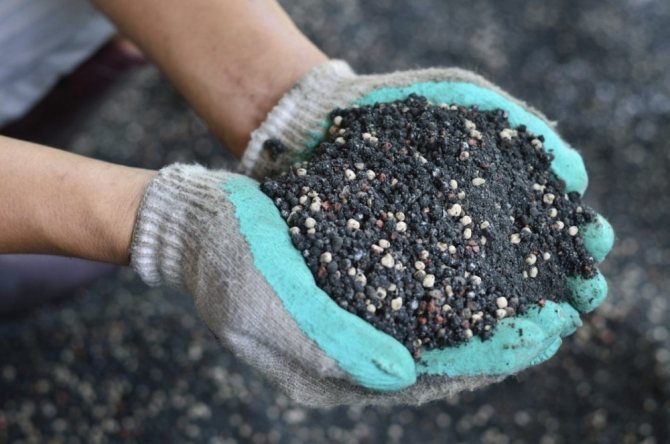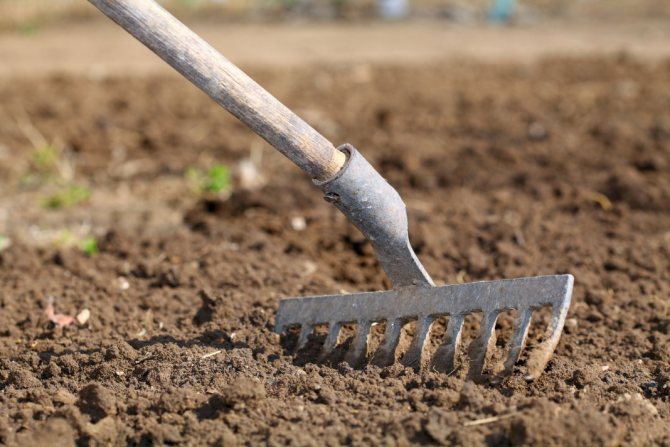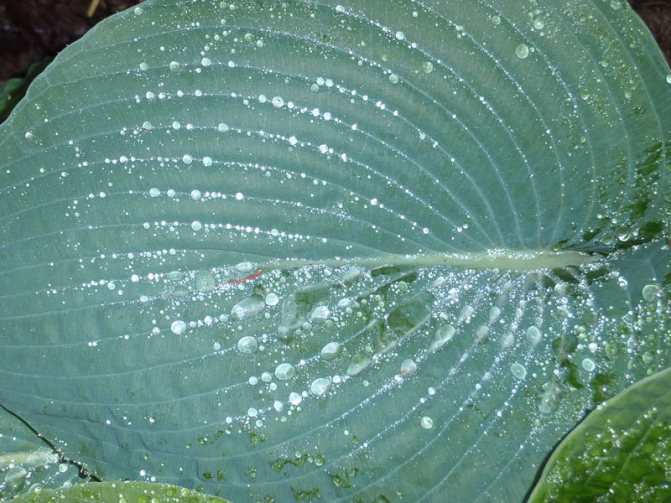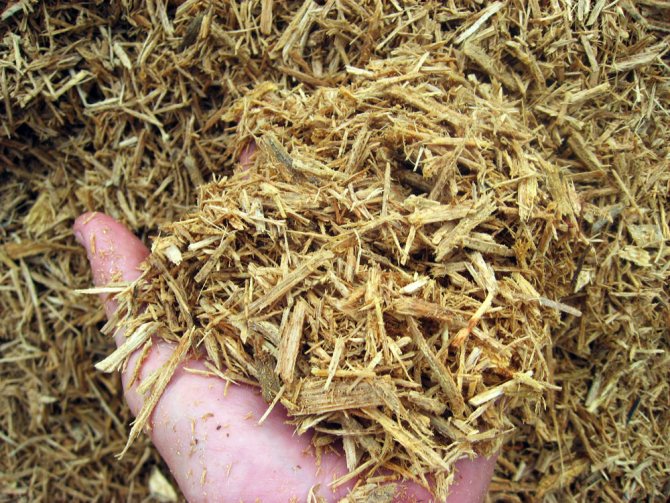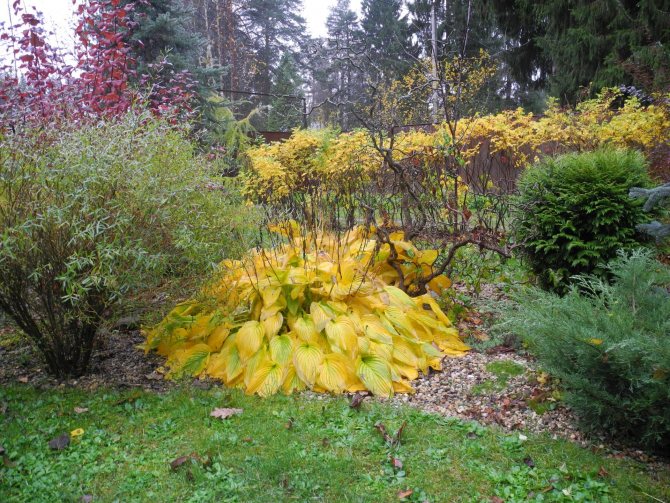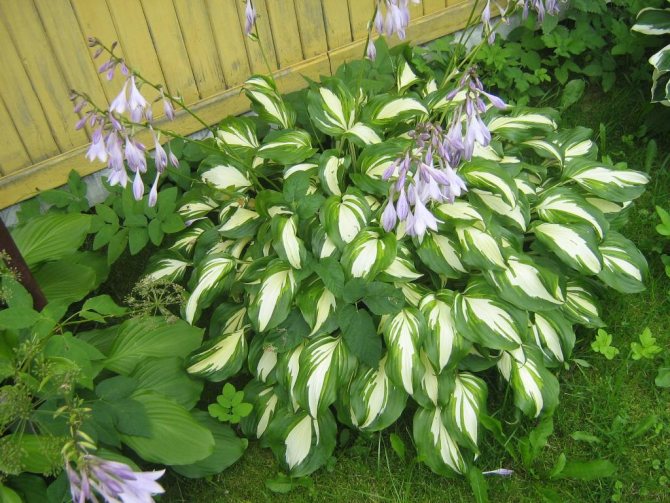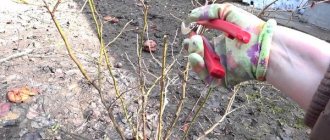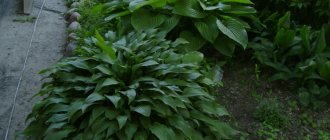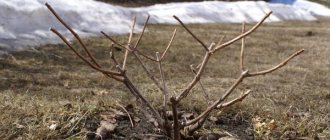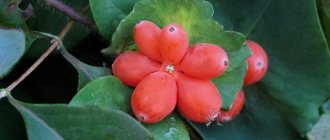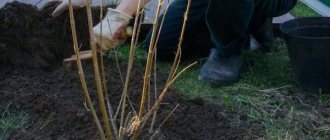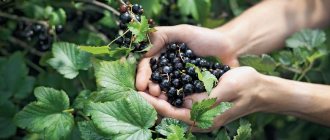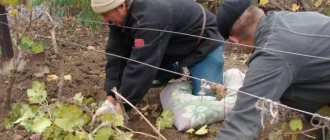Hosta is the favorite of many gardeners and florists: its decorativeness is combined with absolute unpretentiousness and the possibility of growing even in shaded corners of the site. Few ornamental crops have such properties. In order for this plant to annually please the eye with its juicy bright leaves, it is necessary to prepare it competently and in a timely manner for wintering. This activity includes careful care during the fall and the organization of the shelter, depending on the climatic conditions of the region.
Features of care in the fall and preparation of hosts for winter: the main activities
Many gardeners say that the hosta does not need special preparation and specific shelter from strong drops in temperature. But this judgment is wrong. This formulation is only suitable for plants that are grown in southern regions.
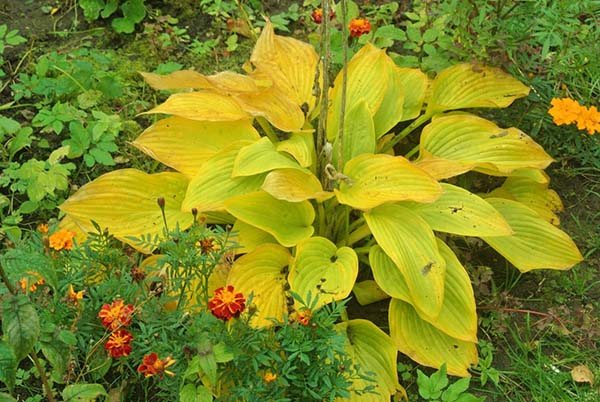
The plant tends to bloom in July-October, depending on the species and variety, therefore Initial preparation for winter involves removing buds that have faded. Such an element of caring for hosts in summer and autumn is necessary so that the plant does not expend its energy on the formation of seeds and their ripening.
By the way! If your hosts do not bloom very beautifully (of the usual variety), then you can not let them bloom at all, but cut off the flowering arrows immediately after they appear.
The host loves moisture and abundant watering. Moreover, it is necessary to water correctly so that the plant does not catch a fungal infection, and more specifically, try not to get on the leaves.
By the way! The host is able to independently signal the need to water it, namely: it lowers its leaves to the ground. Moreover, you should not allow the leaves to dry out.
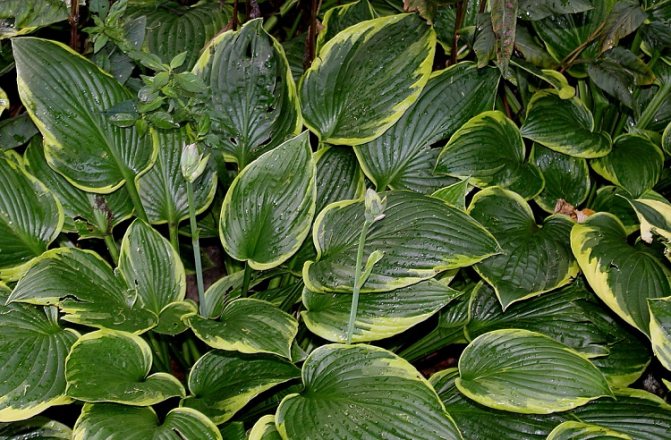

The host also needs watering during the autumn months. The soil under it should be poured abundantly so that the entire root system is saturated with life-giving moisture before wintering. When the temperature begins to drop, watering will need to be gradually reduced, and then completely stopped.
The last nitrogen fertilization is carried out in the first half of summer for a more lush growth of greenery. Before wintering, any nitrogen fertilizers are no longer required, because they will provoke the growth of green mass and rhizomes of the plant, because of which it can winter badly, and its resistance to diseases will definitely decrease.
To better prepare the plant for winter in the autumn, it needs phosphorus and potassium., so you can feed the host with, for example, bone meal and wood ash (for lovers of organic farming) or mineral fertilizers - potassium sulfate (20-30 grams) and superphosphate (30-40 grams per 1 square meter of the garden) or with a special ready-made "autumn" fertilizer (according to the instructions).
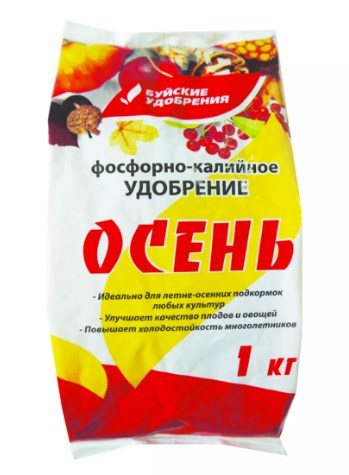

Advice! It is better to dissolve mineral fertilizers in water (in 10 liters), and organic fertilizers - just pour around the plant, and then water.
With the onset of cold weather hosts should be covered, or rather mulched. For this, mowed grass and peat are well suited (they must be mixed so that the grass does not cake).
By the way! Sawdust absorbs a lot of moisture, and in winter it can be harmful.
In the fall you can share and transplant hosts, you can learn more about this in the following video.
Video: how to share and transplant a host in the fall
Preliminary processing
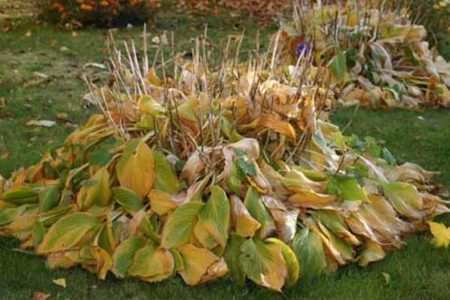

By following the rules on how to prepare your favorite hosts for winter, you can achieve a quick spring awakening. Particular attention should be paid to top dressing, mulching and final watering. In terms of timing, you need to focus on annual forecasts and the average statistical climate, but the general rules for preprocessing are universal.
Watering should be gradually reduced after the month of August. It is advisable to leave only morning moisture in the absence of natural precipitation. If the bush is located on the sunny side, before the onset of cold weather, you need to water it regularly. So the roots can be saturated with moisture, become more flexible and silty. This is useful before the harsh winter. Stop watering only after shelter.
Hostas respond best to complex supplements in the fall, while all stimulants should be excluded. It is optimal to apply fertilizer immediately after watering or rain, in moist soil. In the fall, only the root method of feeding is left, foliar is no longer required, since the leaves do not need to develop during this period. You can use superphosphates and potassium concentrates, 30-40 grams per 1 square meter of soil, dissolve according to the instructions.
In winter, caterpillars and beetles are especially dangerous for the bush. Slugs and snails are practically inactive during this period. You can protect yourself from all these pests by using simple folk remedies. For example, before sheltering, sprinkle the entire area under the crown of the leaves with crushed eggshells. In the spring, this layer will be a source of calcium useful for the hosts. With the awakening of the bush, one of the most dangerous pests is activated - nematodes. It is impossible to destroy them, therefore, even before hiding, you should check the leaves. Finely chop one branch of the hosta, put it in a glass, add water and leave in the light for a couple of hours. After carefully consider: if there are small white worms in the water, the bush must be urgently dug out so that in the spring it does not infect the rest of the plantings.
It is imperative to mulch the hosts before wintering. A mixture of peat, sawdust and dry humus in equal proportions is well suited for this. As a result, you need to get a dense layer with a thickness of at least 1 centimeter. The more severe the frosts and less snow cover, the more mulch is needed. If there are a lot of slugs and snails on the site, you need to add tobacco dust and phytosporin to the mixture. The first will protect from pests, the second from fungi carried by these creatures. In the spring, mulch will become a complete fertilizer.
Pruning hosts in autumn
The question "Should the host be cut for the winter in the fall?" - is the cause of disputes for many gardeners.
Some argue that cutting the foliage is highly discouraged. After all, it contains all the nutrients that must independently move from the greenery to the root of the plant. And already upon completion of this process, the tops naturally die off by themselves.
Others (inexperienced growers) argue that it is necessary to trim the leaves of the hosta for the winter.
So should the host be pruned in the fall for the winter?
According to most experienced gardeners, this is a rather meaningless procedure that can be performed only for aesthetic (decorative) purposes, because the plant overwinters well with leaves.
But if you still decide to cut the host for the winter, then when should it be done?
The main signal that the plant can be cut is when the leaves turn yellow completely. This means that all the nutrients have already been safely transferred to the root system.
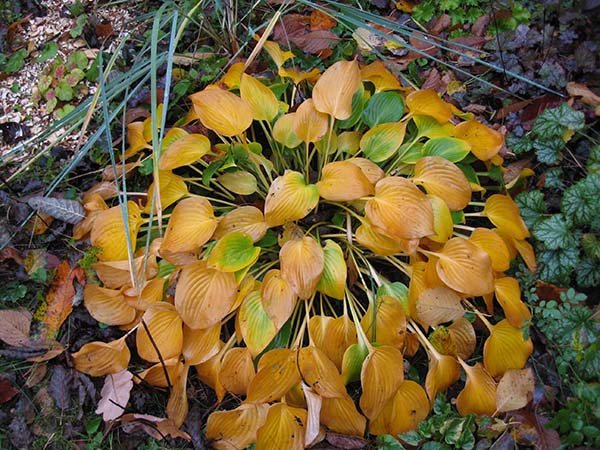

How to prune hosts in the fall?
Take your pruning shears and cut off all the leaves, leaving about 10 centimeters (1 in) stumps.
Important! In general, pruning is best done in the spring, or rather, you can just walk with a rake and remove the foliage that has died out during the winter.
Video: why you don't need to crop hosts in the fall
Cutting the stems
Many gardeners, when asked whether it is necessary to prune the hosta before winter, say that it is necessary to remove all the leaves of the plant. Others disagree with this and suggest removing only some of the stems.
With the arrival of cold weather, you need to remove the stems on which the flowers grew. So the plant will not form seeds and can save energy for the future growing season. And during the frosty winter, nutrients are essential!
With the help of a pruner, the grower carefully cuts the stems. It is better not to touch the rest of the foliage. There are several reasons for this:
- due to cold weather, the leaves of the hosta will dry out and can become a natural mulch for planting, as well as protect the root structures from freezing;
- trimming all the foliage at the same time is a huge stress on the plant.
If you cut off all the leaves at once, the hosta will try to grow them, spending a lot of energy on this process. Having weakened, the plant may not withstand the winter cold.
When to prune a hosta for the winter? The process can be started when yellow leaves appear, but should be done before the morning frost.
Some garden owners prune the hosta with the arrival of spring. It is believed that such pruning allows the plant to successfully overwinter, preserving its own strength. In the spring, when new shoots appear, you can remove last year's ones.
Now it becomes clearer whether the host needs to be pruned for the winter. What other procedures should be done in the fall?
Shelter hosts for the winter
Many novice amateur gardeners are thinking about whether to cover the host for the winter. It should be said right away that in cold regions the plant really needs to be sheltered. However, the essence of this shelter comes down exclusively to mulching the area around the bush.
In general, hosts are quite frost-resistant plants, besides, you do not need to preserve the aerial part, every year it grows again.
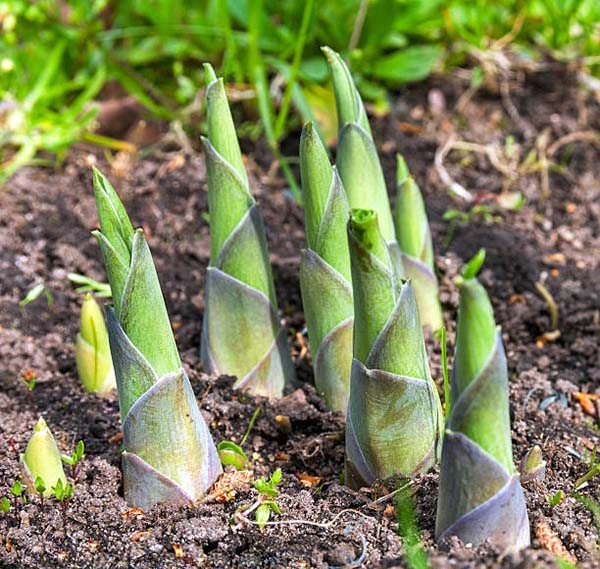

So how do you properly cover your host for the winter?
Note! Obviously, it is necessary to have time to mulch before the onset of frost.
Mulching (sheltering) hosts in the fall should be performed in the following sequence:
- 1. Prepare the mulch itself. For example, it can consist of cut grass and peat (more). Also you can use bark or compost.
By the way! In principle, you can take the most common garden land... But using grass, peat or compost will serve excellent organic fertilizer in the spring.
- 2. Next, mulch the plant, covering it from all sides with a layer of 5-10 centimeters. Just do not put mulch on top of the leaves! Another thing is, if you cut off the leaves, then you can fill it with a mound. In general, for the winter, the hosta should leave with leaves, which will finally fall after dying off and become an additional shelter.
Important! Such a shelter is quite enough to protect the roots of the plant from severe frosts.
Generally, you do not need to use special nonwoven covering materials such as agrofibre or spunbond.
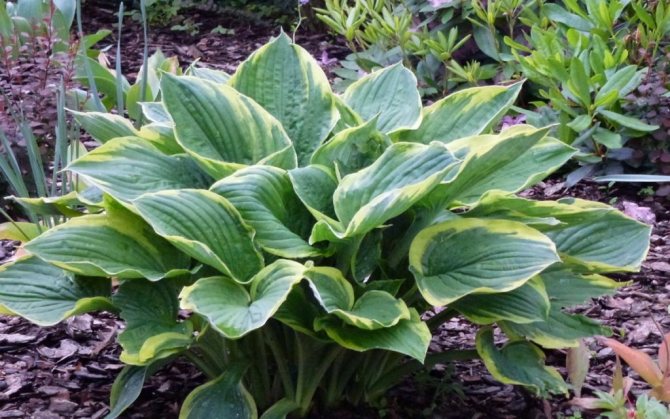

Advice! In early spring, do not forget to rake off the mulch to allow the soil to warm up better and the plant grows faster.
Features of preparing hosts for winter in different regions
Each region has its own nuances of growing plants, in particular hosts. But as for autumn care and preparation for winter, there are differences only in the peculiarities of the shelter for the winter.
Important! If you have snowless winters, then you can play it safe and additionally cover it with non-woven material or spruce branches.
In the south of Russia
Hosts that are grown in the southern regions (for example, in the Krasnodar Territory) practically do not need shelter. It's another matter if you live in the Volgograd region, where there are fairly strong and prolonged frosts.
The approximate dates for mulching (sheltering) the host in the southern regions are the last days of October - the first half of November.
In the middle lane (Moscow region)
In the conditions of the Central strip (Moscow region), it is imperative to cover the host for the winter. In this case, it will be quite enough to mulch the root area with a thick layer of peat mixed with cut grass, or use bark or compost.
The approximate timing of shelter (mulching) hosts in central Russia (Moscow region) - the end of September - the first half of October.
In the Urals and Siberia
The conditions of the Urals and Siberia are characterized by severe frosts and sub-zero temperatures. Therefore, a shelter similar to the middle lane is also needed here. At the same time, for additional insulation, you can throw snow masses over the plant or immediately cover it with spruce branches.
The approximate timing of shelter (mulching) hosts in the Urals and Siberia is September.
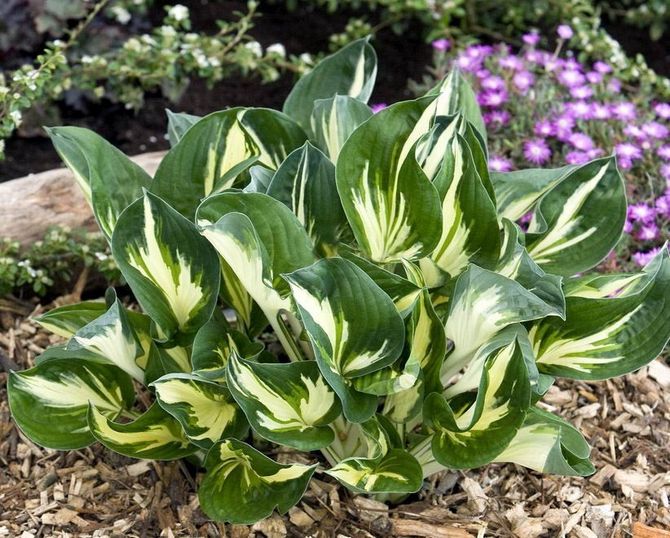

Autumn works
Is the hosta pruned for the winter, and what measures are needed to prepare the plants for the cold weather?
The culture is unpretentious and does not require complex, thorough self-care. However, do not think that you can ignore these plantings. Of course, the plant feels great in sunny and dark places, it does not need frequent watering and fertilization. But preparation for winter frosts is necessary, especially when it comes to the middle climatic zone of Russia.
Does the host need to be pruned for the winter? Florists answer this question in the affirmative. But there are some nuances in this direction.
Pruning is done in conjunction with other fall plant care activities that include:
- mulching;
- shelter;
- transfer - if necessary.
Let's dwell on each of the stages in more detail.
Typical mistakes in caring for a host in the fall when preparing for winter
Many gardeners, without thinking about the consequences, are able to commit rash actions that can harm the plant. But the wrong autumn care for the hosta in the fall can cause quite a lot of damage to the plant.
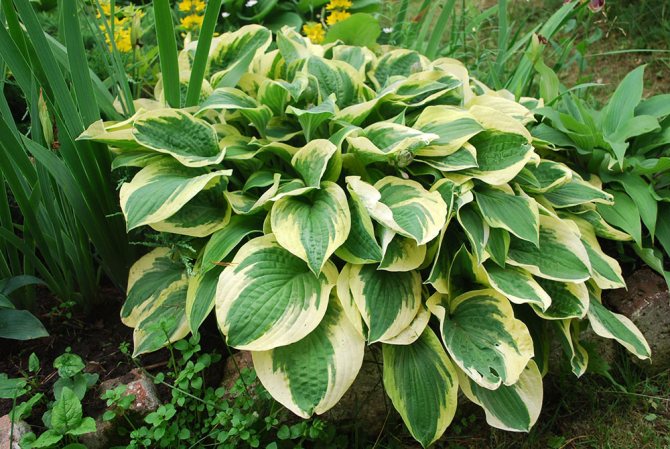

There are several mistakes that should not be made when caring for a plant in the fall and preparing it for winter:
- Top dressing with nitrogen fertilizers with the onset of autumn - nitrogen fertilization entails the activation of leaf growth, so the shrub will try to release young leaves, and not get ready to go on a winter vacation.
- Lack of shelter (mulching) or, on the contrary, the use of special materials for shelter, especially waterproof... The thing is that hosts winter well just under a thick layer of mulch.
Thus, taking care of the hosta in the autumn does not present any particular difficulties. To do this, you just need to know the rules for pruning it - cut off only the peduncles at the end of summer, and do not waste your precious time on the autumn pruning of foliage. Much better to do her shelter, or rather mulching.
Video: preparing hosts for winter
Diseases and pests
An important aspect in the matter of planting and caring for hosts in the open field is the fight against diseases and pests. The most common problems are:
- Phylostictosis is a fungal infection. It manifests itself in the form of spots on the leaves of brown color. Damaged foliage should be destroyed as soon as possible and the plant should be sprayed with special preparations.
- Botrytis. With this disease, the leaves quickly dry out and fall off. It is possible to cope with it only with the help of chemicals.
- Damage by garden slugs. These insects are considered the main host pests. To combat them, drugs are also used. It can also be picked up by hand and destroyed.
With proper care, the host will grow and develop rapidly. It will be a wonderful decoration for any garden.

